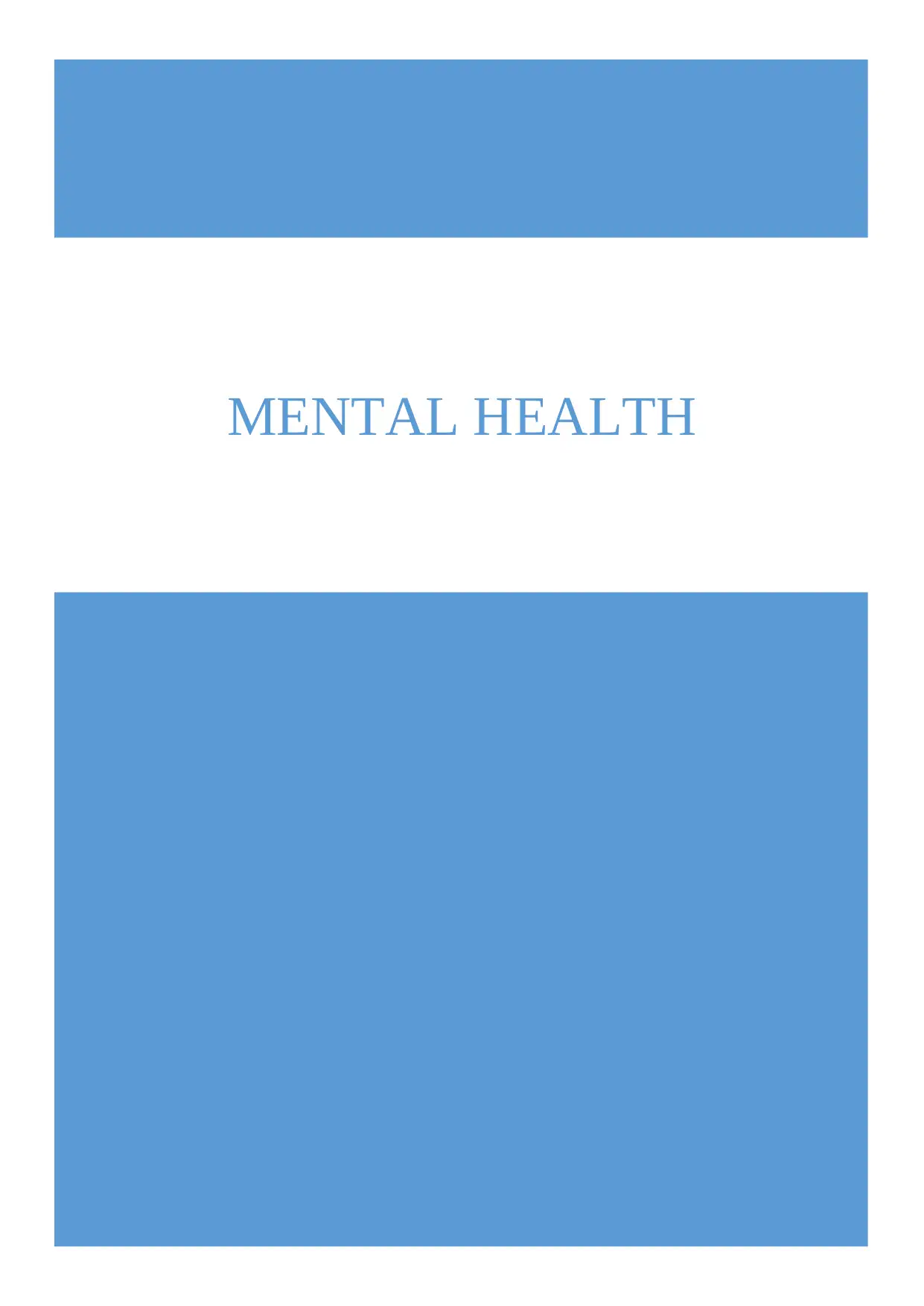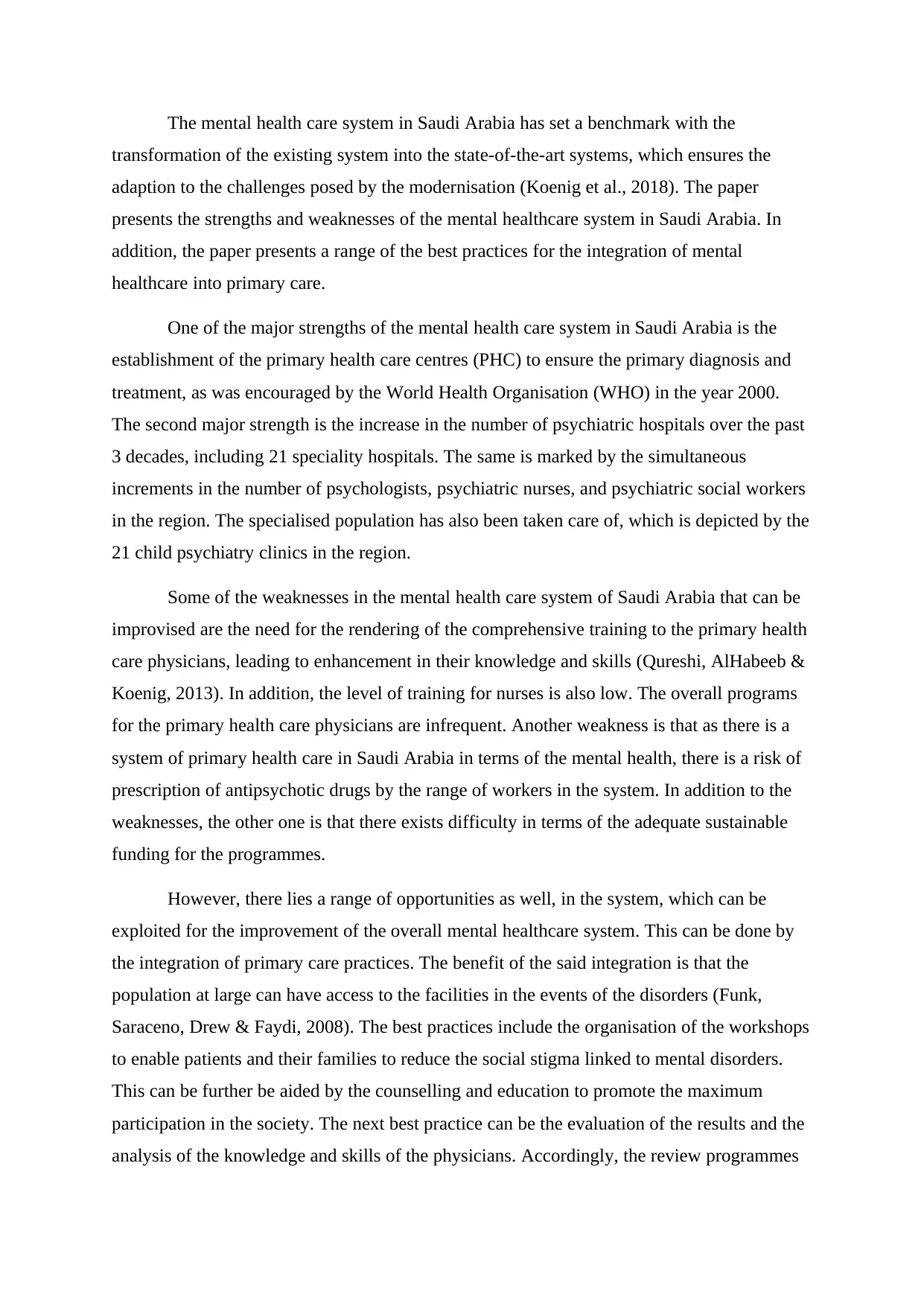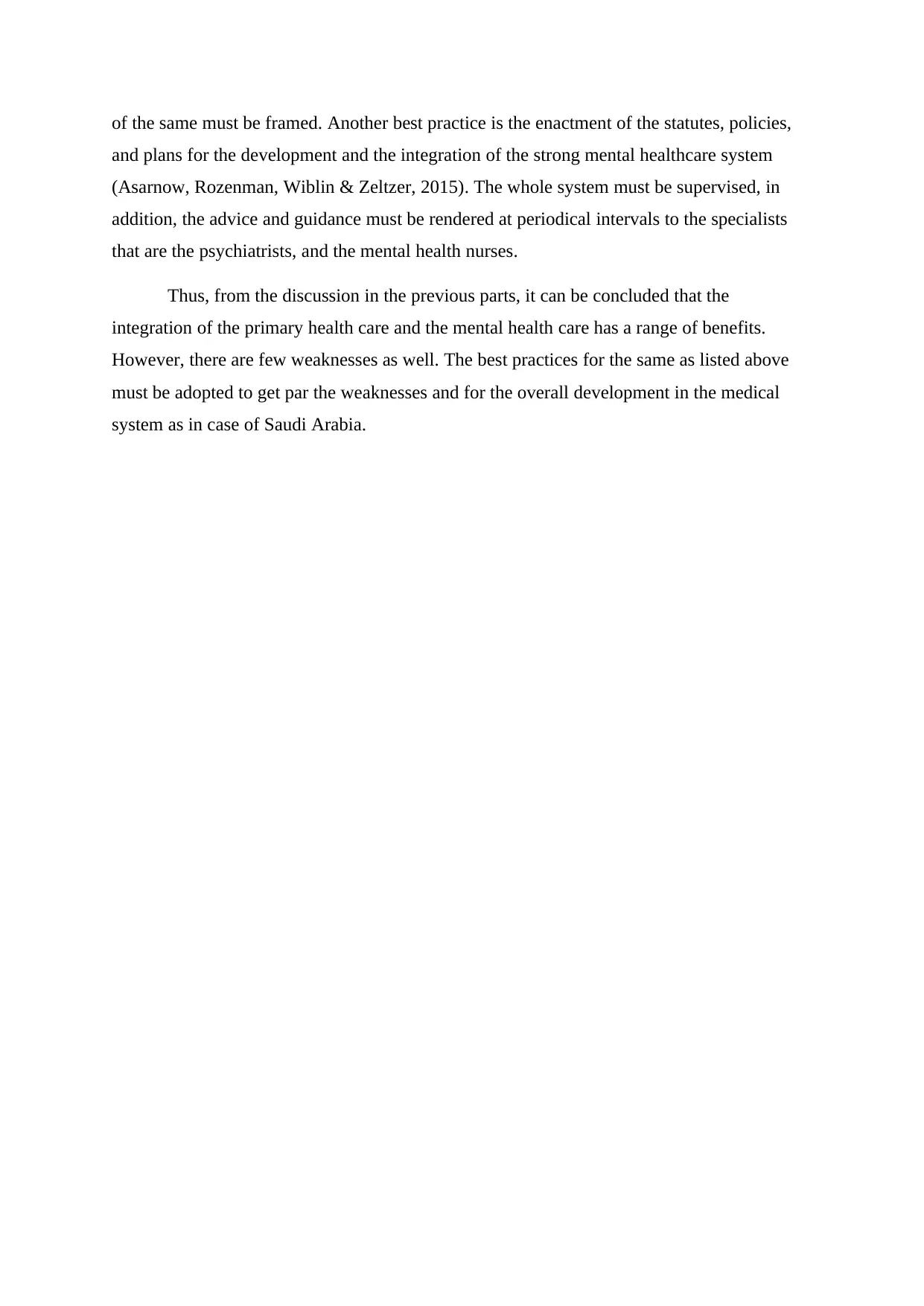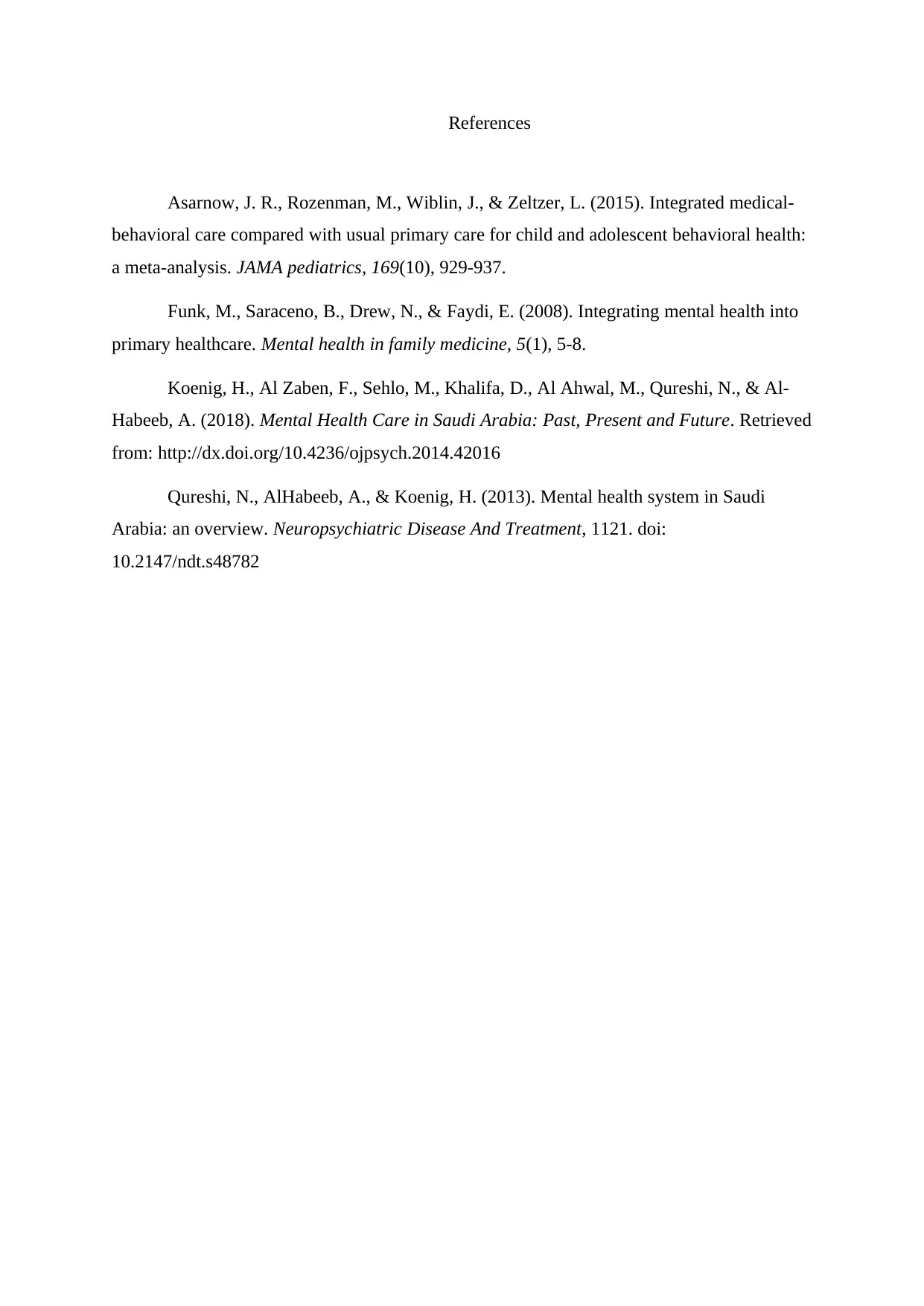Analysis of the Mental Health Care System in Saudi Arabia
VerifiedAdded on 2023/05/31
|4
|831
|99
Report
AI Summary
This report provides an analysis of the mental health care system in Saudi Arabia, examining its evolution and current state. It highlights the transformation of the system to meet the challenges of modernization, with strengths including the establishment of primary health care centers and an increase in psychiatric hospitals and specialists. Weaknesses identified include the need for improved training for primary care physicians and nurses, and challenges in funding. The report also discusses best practices for integrating mental healthcare into primary care, such as workshops to reduce stigma, evaluation of physician skills, and enactment of policies. The conclusion emphasizes the benefits of integration while acknowledging existing weaknesses, and suggests the adoption of best practices to improve the overall mental healthcare system in Saudi Arabia.
1 out of 4











![[object Object]](/_next/static/media/star-bottom.7253800d.svg)